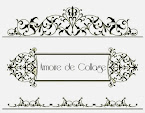Nothing brings out the ghouls like Halloween. Among
seasonal holiday collectibles, Halloween reigns supreme. Antique dealers will
tell you the scarcity of Halloween collectibles is due in large part to the
materials they were made from...paper mache’, cardboard, and wax. Halloween
collectors are often the same niche market that collects funeral and mortuary
items referred to as ‘Postmortem Collectibles’ or ‘Mortuary Memorabilia.’ Likewise,
these items are rare and thus highly prized.
According to antique dealer and 34-year licensed
mortician and embalmer, James King at the Spring Antique Mall, the most popular
collectibles are photographs that depict the deceased in coffins in the 19th
century. The earlier photos were sepia; and later in black and white.
“Photographs of black individuals are especially rare,”
said King. “Photography was very expensive at that time. Only someone of
substantial means could afford it. Depending on the condition, these
photographs can be valued at over $1000; closer to $1500.”
Old embalming instruments would be second to photographs,
according to King. Probably not as obvious to the lay person, but for a funeral
professional or a serious collector of the macabre, these items would not only
be instantly recognizable, but highly prized. Also in King’s private collection
is an early 1920’s metal hip joint replacement (bottom left).
Other mortuary collectibles include casket plates
(several in photo), cremation urns, and advertising collectibles, all of which
King has collected over the years, including a kitchen metal match holder that
advertises…”Furniture, Carpets, Oil Cloths, Shades, and Undertaking &
Embalming.” (In photo middle right). Ash trays are pretty prolific. Crucifixes
and crosses are more popular with the home décor market, and some items serve
well for utilitarian purposes, like coffin handles for towel racks.
Ephemera (paper) advertising
collectibles are priced on condition, but lower in value. Examples would be
cabinet cards which were handed out at funerals bearing the name, date of
death, and age of the deceased, and also included a prayer. Calendars,
matchbooks, hand fans, and holy cards, are plentiful and reasonably priced for
the entry level collector.
King has a greater opportunity than most to locate
mortuary memorabilia, traveling the country holding seminars for first
responders, city emergency managers, and hospitals, on the subject of mass
fatalities. He’ll be addressing a group of morticians on this subject in
October, at Houston’s National Museum of Funeral History located in north
Houston at 415 Barren Springs Drive. The museum houses the country’s largest
collection of funeral service artifacts.
“It’s an excellent place to learn
about the fascinating history and evolution of the funeral business,” added
King.
The museum also plays host to corporate events and
parties. Almost assuredly the occasion would be lively, and reportedly,
organizations are dying to schedule events there. For more information, visit the National Museum of Funeral History website at http://nmfh.org/ and ‘Like’ their
Facebook page at https://www.facebook.com/funeralmuseum/?fref=ts
See related article "Trick or Antiquing" at http://bit.ly/2dYqwe2




No comments:
Post a Comment